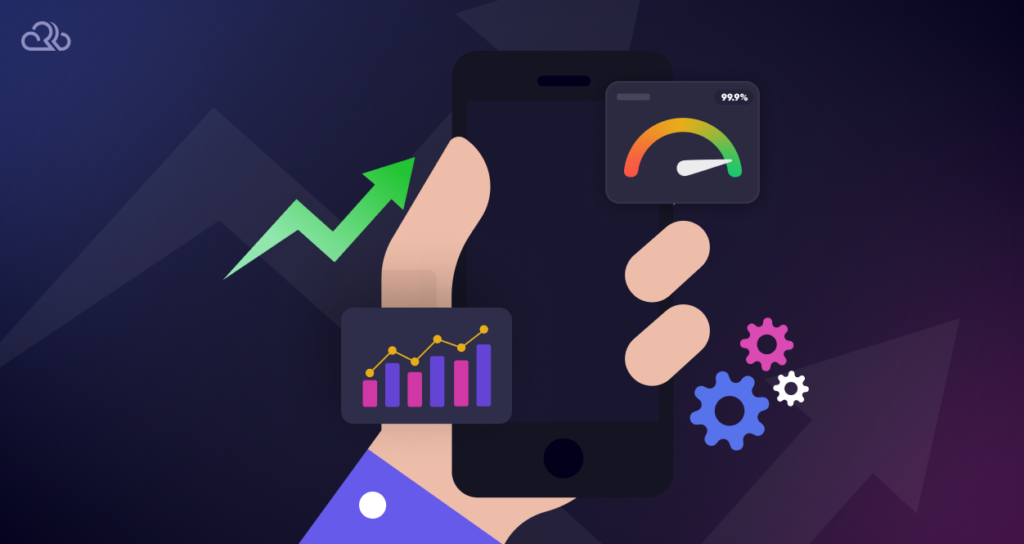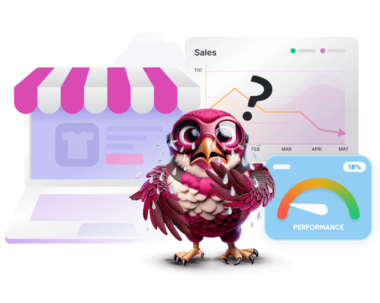Mobile Optimization: An Overview
Mobile optimization for WooCommerce and other e-commerce stores provides a positive user experience and boosts conversion rates. With an estimated 60% of E-commerce purchases made on mobile phones in 2024, an optimized mobile storefront is crucial for the survival of modern businesses. In this article, we will discuss the importance of mobile optimization and give you some tips to ensure your storefront provides a mobile-friendly interface that will convert customers.

Why Mobile Optimization Matters in E-Commerce
Good mobile optimization is like skin: vital, and you don’t really think about it when it’s there. But when you take it away, the results are as obvious as they are painful. We have all experienced what a non-optimized landing page looks like. Web elements that fail to resize to the screen. Pop-ups that devour the entire display and make it impossible to do anything. Visual elements that distort or otherwise fail to load. You probably immediately abandoned the website after running into these errors. If so, you’re not alone – even small customer-side frictions have a significant impact on bounce rates. Google Insights found that 53% of visits are abandoned if a mobile site takes longer than 3 seconds to load. The same source states that 79% of users are more likely to return or recommend a mobile site if they deem it easy to use.
With three out of five dollars spent on e-commerce spent via mobile, losing mobile web traffic can severely curtail total conversions and sales. In fact, being mobile-ready can improve engagement by as much as 85%. Moreover, page load speed and mobile friendliness are factors Google uses when generating its search rankings. In short: mobile optimization is a necessity, not a luxury.

9 Quick Wins for Mobile Optimization on WooCommerce
At Rapyd, our mission is to help you build successful, scalable web storefronts and make big wins in your e-commerce business. Here are nine of our top recommendations to optimize your WooCommerce site and maximize conversion rates:
1. Measure and Accelerate your Load Times
Keeping your load times low – especially on landing pages – is crucial for engaging customers at the top of the funnel and driving conversions; every second of an increase in load times can reduce conversion rates by 17%. Load speed is a key metric for mobile shopping, and should be measured and optimized for regularly. Open source tools like Google’s Lighthouse (formerly Google Friendly Mobile Test) can analyze page loads and run site audits. Lighthouse also offers a number of implementation options – from simple web and command line tools where a URL can be entered for a quick assessment, to Chrome Dev Tool and Node implementations that can be embedded into your development cycle.
Choosing the right web host for your site is also vital to keeping load speeds low and stable – consider using hosts that offer dynamic resources and can scale with increases in traffic. Load times can also be improved by reducing the number of CSS and JavaScript files acting on a page, removing unnecessary plug-ins, optimizing images (see item 3), and using the appropriate caching techniques and Content Delivery Networks (CDNs) for your site.
2. Streamline your Website’s Design
Aside from the technical implementation of your e-commerce site, the overall design and user flow are key. Actions that customers are likely to perform (or that you want them to perform) should require as little effort as possible and be intuitive. Some storefronts like to add technically complex bells and whistles, or devote themselves too much to a certain gimmick, and thus make mobile navigation more convoluted and confusing for the customer.
To build a seamless web experience consider keeping pop-ups to a minimum, or making existing pop-ups less ‘loud’; use simple, complementary colors that make the text legible – colored text may look good to you but not to all of your customers, not to mention the risk of driving away color blind users; implement ‘dark mode’ compatibility and other accessibility tools like screen reader support; make important buttons visible but not overbearing; and – most importantly – map out the number of actions a user has to complete to achieve a task and reduce this number wherever possible.
3. Optimize Images for Fast Loading
Humans tend to respond strongly to visual stimuli. That’s why images and videos are essential in online sales – both as a means to draw in customers and to help them visualize the product and make the decision to buy. But images, especially the high quality images used in modern e-commerce, take some effort to load, and image-heavy pages lead to slower loading speeds and errors if they are not optimized for mobile users.
Thankfully, modern compression techniques allow you to reduce image size without affecting quality. Tools such as TinyPNG can be used for this purpose. Larger storefronts with thousands of products, or those that allow users to upload their own images, must consider automated image compression in their pipelines. Other techniques such as lazy loading – in which images are not fully resolved until they are needed – can also help keep loading times manageable.
4. Embrace Responsive Design
Nothing is more frustrating to mobile users than a website that won’t display correctly on a mobile screen or that isn’t configured for touch input. For example, 67% of mobile users in 2023 stated that pages and links being too small to click were significant barriers to their online shopping.
Responsive design principles are ideally implemented during the design phase and followed through to development and testing. Mobile-friendly sites generally use flexible grids of content that can stretch or contract to different screen sizes and orientations. For example to handle landscape vs portrait. While developing web content, relative values (e.g. % of screen) rather than absolute values (number of pixels) are a must. Dynamic fonts that change based on hardware are also useful. This allows your content to stay not only legible but pleasant to read on all manner of devices.
5. Simplify the Checkout Process
How many clicks does it take a user on your WooCommerce site to buy your product? This is another invaluable metric, and one that you should take every step to reduce. There should be no walls between your user and their ability to buy a product on your site. Amazon, the champion of e-commerce, introduced the 1-click system in 1997 which has been replicated countless times since. In fact, sites with a one-click checkout option tend to have a conversion rate of 10%, versus the average of 2-3% for those which don’t.
Ways to simplify the Checkout process on your WooCommerce site include:
- Integrate payment services such as PayPal, Google Pay, and Apple Pay.
- Reduce the amount of form fields (phone, address, etc.) a user has to fill out.
- Ensure there are clear error messages in your form to help users correct input typos etc.
- Save customer information for repeat purchases.
6. Leverage Mobile Friendly Plug-Ins for WooCommerce
Plug-ins offer simple ways to make the job of running an e-commerce site much easier and save you hours of development time. WooCommerce supports a wide variety of plug-ins that can help you make your site more mobile-friendly and improve the overall user experience. Installing plug-ins is relatively easy, and many are free or offer free trials, so you can shop around and test different options to find the one that’s right for you.
Here are some of our favorite WooCommerce plug-ins for mobile optimization:
- WPtouch: A popular plug-in that immediately converts desktop websites to make them more mobile-friendly, without altering the desktop view. This plug-in offers a free tier and directly targets your Google Mobile Friendliness score.
- Jetpack: A high-level mobile plug-in developed by WordPress.com. It has a wide array of site management tools designed to cater to broad use cases and boasts solid security credentials.
- WP Mobile Menu: A more specific plug-in designed to improve menus and menu interaction on your site. Ideal for sites that already have some level of responsive design and want to improve their menus and navigation.
7. Utilize Mobile Data Analytics for Insights
An estimated 330 million terabytes of data is created on a daily basis, and this number is projected to continue increasing. Modern businesses need to use data and generate actionable insights to remain competitive in almost all sectors. In e-commerce this fact is especially salient.
Collecting data is easy and more or less automatic with a wide variety of tools available, such as Google Analytics and Matomo. It’s knowing what to do with it that can prove more challenging. The first step is to decide which metrics are valuable for your WooCommerce site. (We have already suggested a few in this article, such as load time and clicks-to-checkout.) Once you identify these, the next step is to implement processes that generate and regularly audit your metrics. No single metric can accurately predict your future performance. We suggest keeping a broad selection that targets diverse, non-dependent components of your WooCommerce site.
Click-to-call buttons do exactly what they say on the tin – they allow mobile customers to call with a single touch. Making it easier for customers to get in touch, especially on mobile storefronts, provides an edge over competitors that don’t. It allows users to quickly overcome issues or pull further down the sales funnel. In fact, Forrester Research reported a 143% average return in ROI for businesses who implemented click-to-call functionality.
The feature is relatively easy to implement. But you should prepared for an increase in calls from potential customers and train staff accordingly.
9. Test and Refine your Mobile Site Regularly
Quality Assurance (QA) is essential for all software ventures, and WooCommerce sites are no exception. Regular testing of your site allows for the quick detection of bugs and sources of potential friction. This allows fixes and improvements to be deployed quickly and maintain a high standard of mobile performance and UX.
A wide variety of testing tools, methodologies, and philosophies exist – enough for several full articles on the topic. We’ve collated some of our best advice about web testing here:
- Test core components of your site after every deployment. If possible, have safeguards in place to prevent deployments that break everything.
- Run tests on multiple devices, operating systems and form factors. That includes desktop, tablets, mobiles and different browsers on the same device.
- Automated front-end testing with tools such as Appium and Selenium can save on long-term costs, provided the component being tested is stable.
- Do not skip user acceptance testing. This is end-to-end testing by people who do not know the mechanics of the implementations, i.e. getting as close to the actual customer as possible. If you only have the budget for one type of testing, do this.
Tools and Resources
We’ve mentioned a few resources for mobile optimization throughout the article, and we’ve gathered them all here for easy access, along with a few we didn’t mention:
- Google’s Lighthouse: Open-Source tool to measure loading speeds
- TinyPNG: Simple tool for image compression.
- Canva: A color wheel to help choose complementary colors for your site.
- Our recommended plug-ins, WPtouch, Jetpack, and WP Mobile Menu.
- Appium and Selenium WebDriver for automated in-browser testing.
- Google Analytics and Matomo for analysis of web traffic on your site.

Conclusion
We’ve looked at the importance of mobile optimization for your WooCommerce site, and at a selection of methods to turn your website into a winner, securing a great user experience and driving up conversion rates. Whether it’s increasing load speeds, responsive design, improving mobile navigation or applying best practices in data analytics and testing, we’re confident that there is something in this article that can help you.
Do you want to do more to boost your WooCommerce site’s performance? At Rapyd we make it our mission to launch secure, high-performing websites. Click here to learn more about how Rapyd can help you boost your site’s performance.






